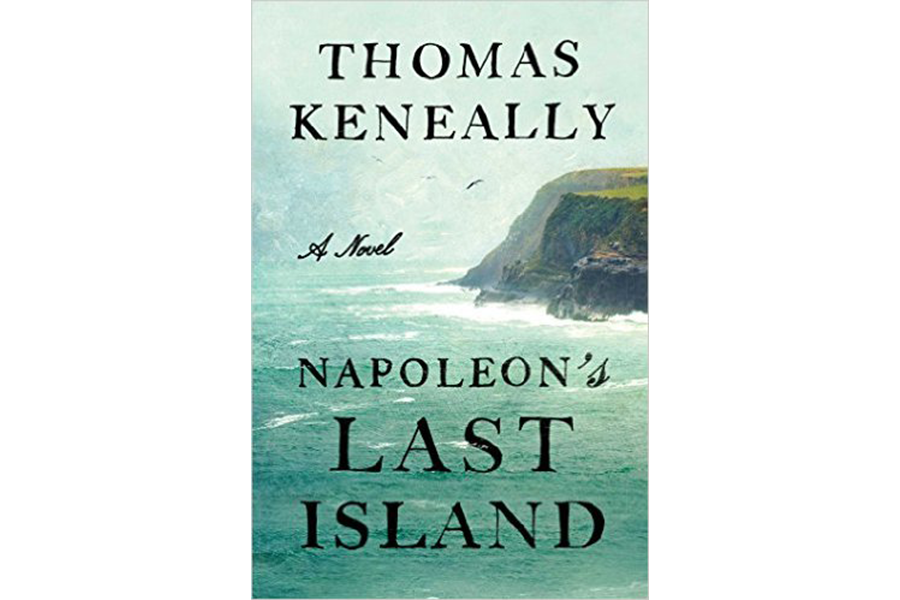'Napoleon's Island' is a mesmerizing portrait of the deposed emperor
Loading...
The first exile of Napoleon Bonaparte, when he was sent to the island of Elba after having been defeated in 1814, almost immediately became a thing of amazement: After less than a year, the former dictator of France escaped from exile, raised an army, and retook power.
The second exile of Napoleon Bonaparte, when he was sent to the far distant island of Saint Helena after having been defeated at the Battle of Waterloo in 1815, was an entirely conventional affair, exactly the kind of thing his first exile should have been: He settled uncomfortably into a flyspeck backwater, treated cordially but guarded ceaselessly, and there he spent the remainder of his days pacing damp rooms and ruminating bitterly over the past.
On the surface, the first exile would seem much more attractive to historical novelists than the second. The first exile has a dramatic arc, beginning in defeat and climaxing in one of the most unlikely victories any downtrodden despot has ever staged. The second has six years of tedium, rancor, and declining health. And yet it's this second exile that's the backdrop for the Napoleon's Last Island, the latest book from Thomas Keneally, and the fact that the book is unfailingly great reading is testimony to the fact that Keneally is our greatest living practitioner of historical fiction. "Napoleon's Last Island" is every bit as gripping and fascinating as, for instance, Keneally's sprawling World War II novel "The Daughters of Mars," but it's a masterpiece in miniature, a drama with almost no moving parts.
It owes the bulk of its success not to the character of Bonaparte himself, although Keneally captures him more vividly than any novel has since Anthony Burgess's 1974 "Napoleon Symphony." No, the real star of these 400 pages is Betsy Balcombe, the teenaged daughter of the expat British family living on Saint Helena and tasked with hosting the aging dictator until his own house of exile is complete. Betsy begins the novel as awestruck by her family's notorious guest as is everybody else on the island (they begin referring to him as The Great Ogre but end up referring to him as OGF – Our Great Friend), but in deft and economical stages, Kenneally quickly makes it obvious that she's a match for Bonaparte in strength of will, stubbornness of pride, and even personal peculiarity.
Bonaparte's unhappiness in his second exile was a multi-layered thing; he grew more bitter about it the more reconciled he became to it. Betsy's father, an officer in the East India Company, feels obliged to defer to “General” Bonaparte (it's forbidden to refer to him as Emperor) and his extensive household during the temporary stay, but Keneally excels at showing the subtle ways Bonaparte's famous charisma quickly begins to warm the hearts and win the loyalties of the Balcombe family. The fact that the family will pay a heavy price in social respect for this loyalty, a fact Keneally lays out before the novel in an introductory note titled “Terre Napoléon,” lays like a shadow over the whole book, but even though the Balcombes know the risk, they still embrace the man.
Particularly young Betsy, who's both fascinated and alarmed by this illustrious guest and his strange, courtly ways. The halting, growing intimacy between these two characters is the centerpiece and genius of the novel, and although in writing from Betsy's perspective Keneally can sometimes overdo the period language, (at one point Betsy observes, “This man was playing ducks and drakes about fires, famed as they might be, and for pure made jollity in a room on an island of nullity!”), the scenes he presents of the two of them together are among the best things he's ever written. When Betsy is playfully swiping at the General with his own sword, she belatedly realizes he may actually want her to wound him – or worse: “A mere cut, as against a serious penetration, would reduce the scene to inanity,” she thinks. “It wasn't what he was looking for. He was looking for something ultimate, and that was marvelous.”
As in his earlier historical fiction, Keneally uses a large cast of well-drawn characters to flesh out the broader story, giving readers many viewpoints of Bonaparte's bloody career and anticlimactic final years. Provincial life in the isolated society of Saint Helena is brought to life with a marvelous lack of condescension; like everybody else on the island, the former dictator thrives on gossip, and the minor punctilios of etiquette become all the more important at such a remove from the courts of Europe. And all of it is measured against the masterful portrait of Napoleon at the heart of the narrative, a self-pitying egomaniac who nevertheless possesses a weird aptitude for friendship, especially with this young woman who has discovered the “compact” between them: “... that I had particular knowledge of him, and of his impulse to play, fully as children play, inflicting pain as children do, and with the same fierce intent of children.”
That kind of “fierce intent” ripples throughout "Napoleon's Last Island," which finds such eager drama and pathos in the least likely of settings. The book is a complex and mesmerizing success.








